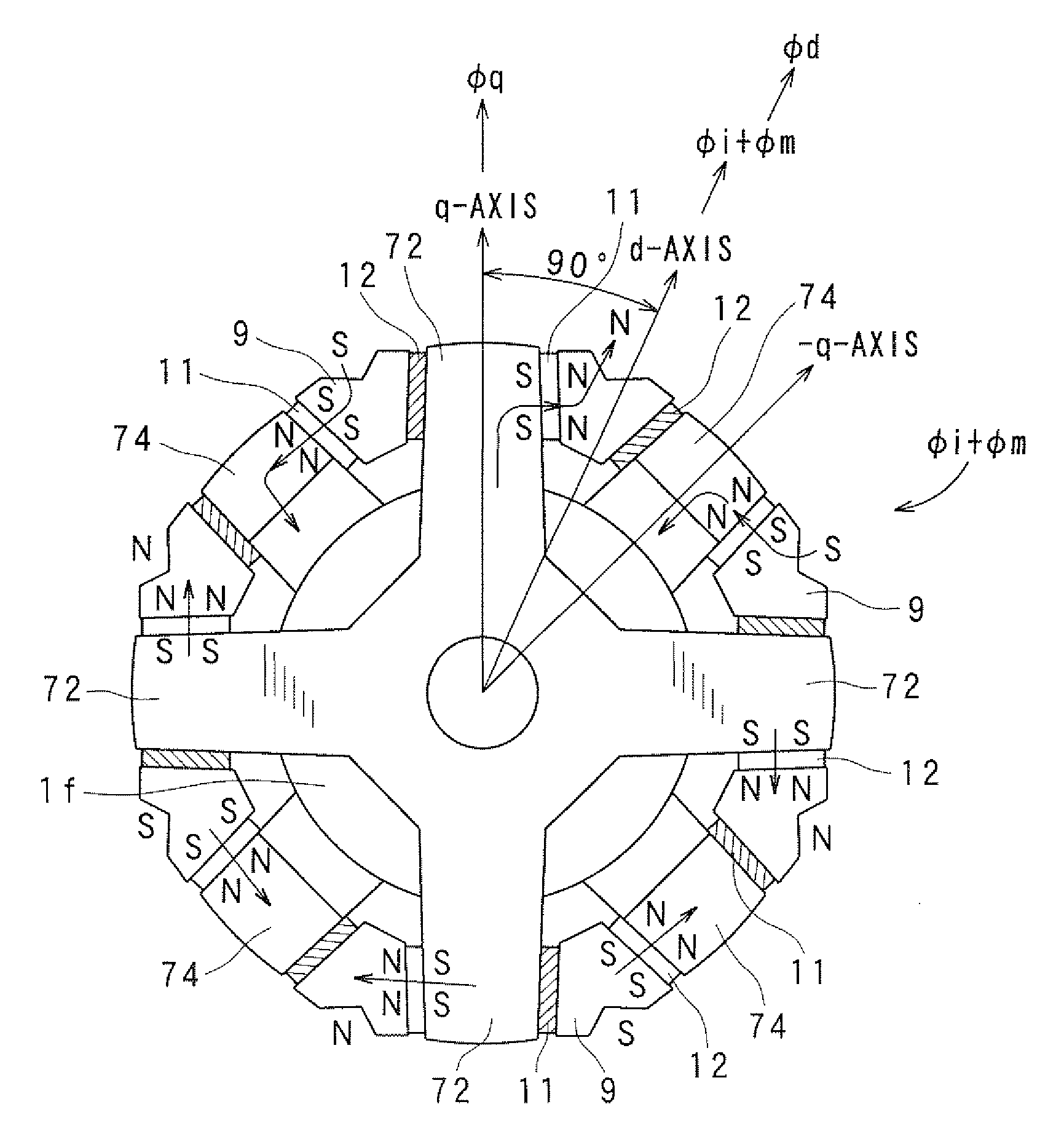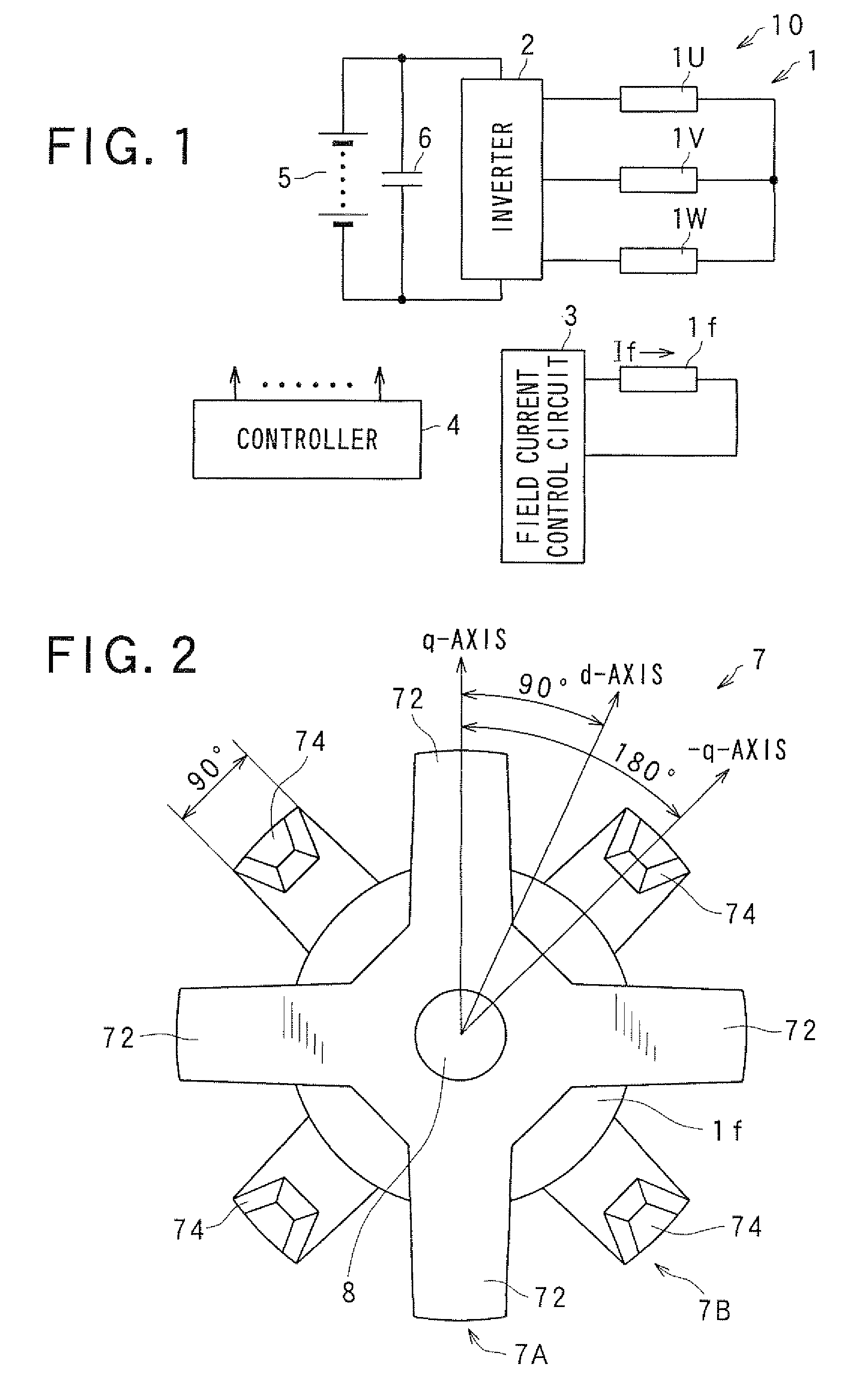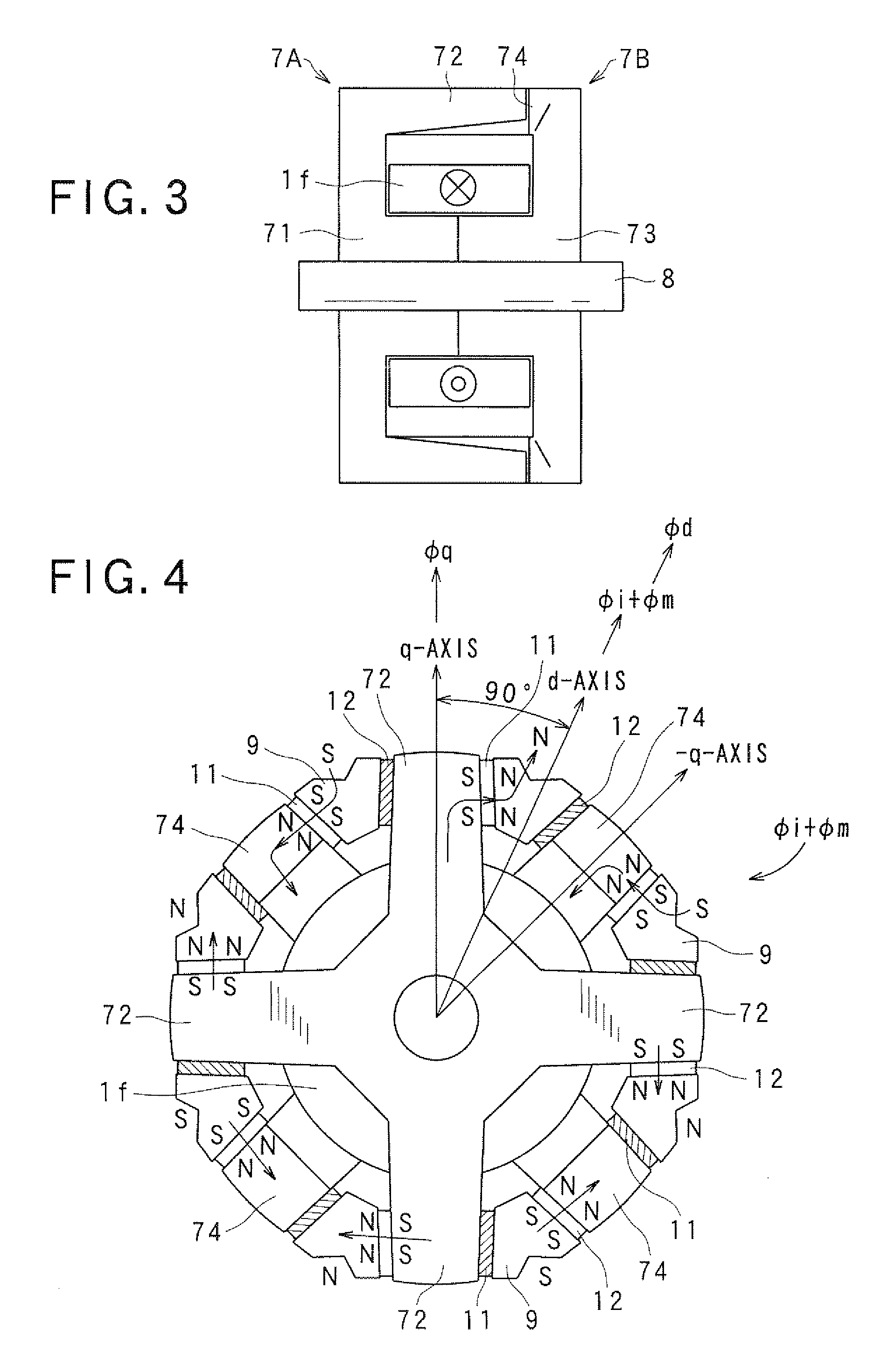Motor apparatus including lundell motor having lundell-type rotor
a motor and rotor technology, applied in the direction of rotating magnets, magnetic circuit rotating parts, synchronous machines with stationary armatures, etc., can solve the problems of low efficiency, low efficiency in high speed range, small output torque for body size, etc., to achieve rapid adjustment of output torque, high rotational speed, and large torque
- Summary
- Abstract
- Description
- Claims
- Application Information
AI Technical Summary
Benefits of technology
Problems solved by technology
Method used
Image
Examples
first embodiment
[0053]FIG. 1 is a circuit diagram of a motor apparatus including a motor having a Lundell-type rotor (may be referred to as “Lundell motor” hereinafter), FIG. 2 is an axial front view of a rotor of the Lundell motor, and FIG. 3 is an axial cross-sectional view of this rotor of the Lundell motor.
[0054]In FIG. 1, the reference numeral 1 denotes the Lundell motor, 2 denotes a three-phase inverter, 3 denotes a field current control circuit 3, 4 denotes a microcomputer-based controller for controlling the inverter 2 and the field current control circuit 3 on the basis of a torque command received from the outside, 5 denotes a vehicle battery, and 6 denotes a smoothing capacitor.
[0055]The Lundell motor 1 includes an armature coil (stator coil) 10 wound around a stator core (not shown), and a field coil 1f. The armature coil 10 is constituted of a U-phase coil 1U, a V-phase coil 1V and W-phase coil 1W which are star-connected to a common connection point. A field current If flowing through...
second embodiment
[0064]Next, a second embodiment of invention is described with reference to FIGS. 4 and 5. FIG. 4 is an axial front view of a rotor of a Lundell motor of the second embodiment, and FIG. 5 is an axial cross-sectional view of this rotor of the Lundell motor.
[0065]The second embodiment differs from the first embodiment in that it additionally includes a d-axis pole section 9 made of soft magnetic material, a tabular permanent magnet 11, and a non-magnetic metal plate 12, which are provided in each of the circumferential gaps between the claw pole sections 72 and the claw pole sections 74.
[0066]The claw pole sections 72 extend from the axial front side to the axial rear side, and the claw pole sections 74 extend from the axial rear side to the axial front side. The d-axis pole section 9 is located in the circumferential gap between the claw pole section 72 and the claw pole section 74 which are adjacent in the circumferential direction. The radial position of the radial end surface of t...
third embodiment
[0071]Next, a third embodiment of invention is explained with reference to FIGS. 6 and 7. FIG. 6 is an axial front view of a rotor of a Lundell motor of the third embodiment, and FIG. 7 is an axial cross-sectional view of this rotor of the Lundell motor.
[0072]The third embodiment differs from the second embodiment in that the non-magnetic plates 12 are replaced by tabular permanent magnets 13. As shown in FIG. 6, the permanent magnet 13 is magnetized in the opposite direction to the permanent magnet 11 which is across the d-axis pole section 9 from this permanent magnet 13, or in the same direction as the permanent magnet 11 which is across the claw pole section 72 or 74 from this permanent magnet 13.
[0073]In the Lundell motor of this embodiment having the above described structure, most of the field flux generated by the field current If flowing through the field coil 1f and entering the claw pole section 72 through the boss section 71 is bent from the side of the radial outer end ...
PUM
 Login to View More
Login to View More Abstract
Description
Claims
Application Information
 Login to View More
Login to View More - R&D
- Intellectual Property
- Life Sciences
- Materials
- Tech Scout
- Unparalleled Data Quality
- Higher Quality Content
- 60% Fewer Hallucinations
Browse by: Latest US Patents, China's latest patents, Technical Efficacy Thesaurus, Application Domain, Technology Topic, Popular Technical Reports.
© 2025 PatSnap. All rights reserved.Legal|Privacy policy|Modern Slavery Act Transparency Statement|Sitemap|About US| Contact US: help@patsnap.com



